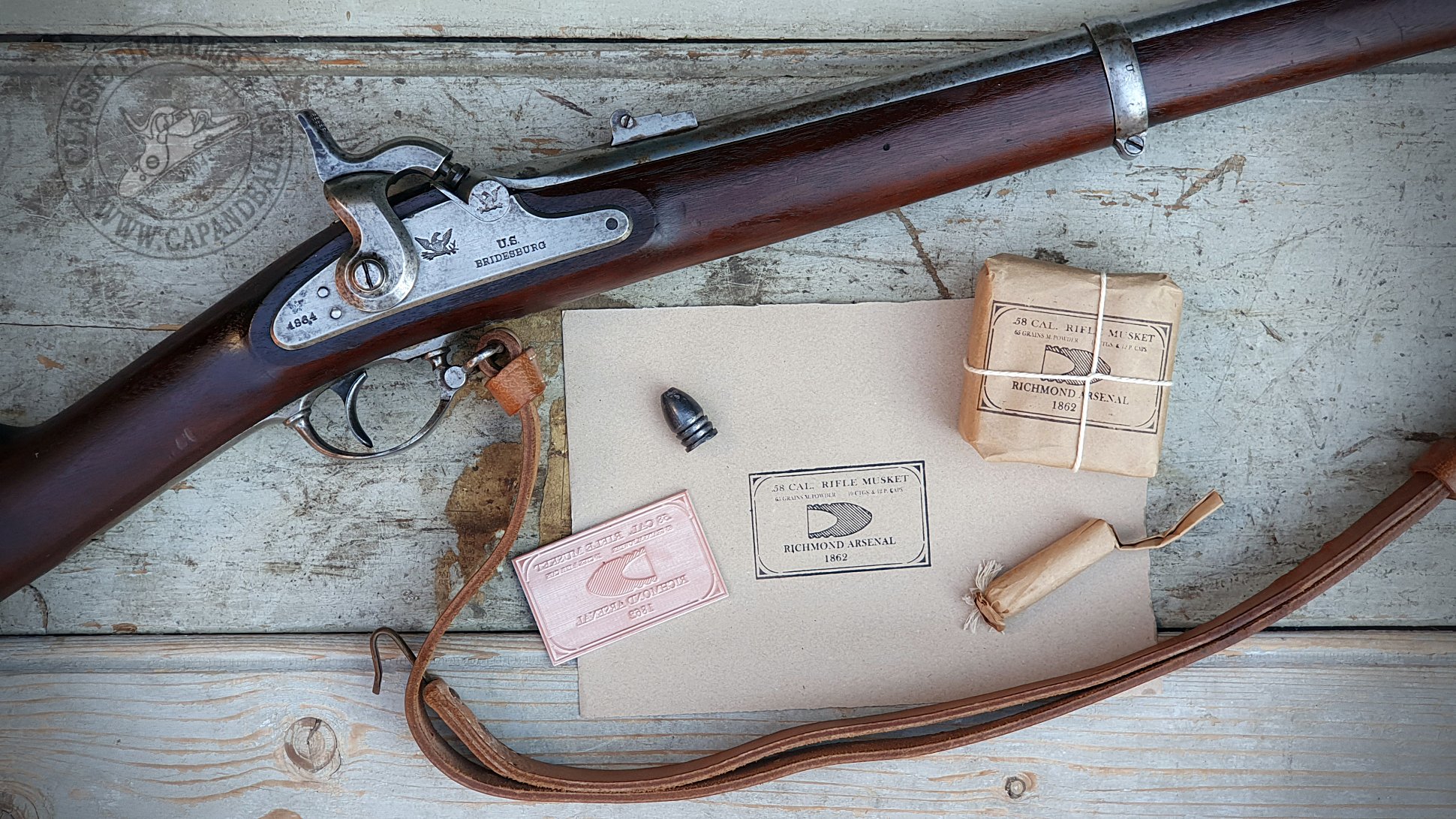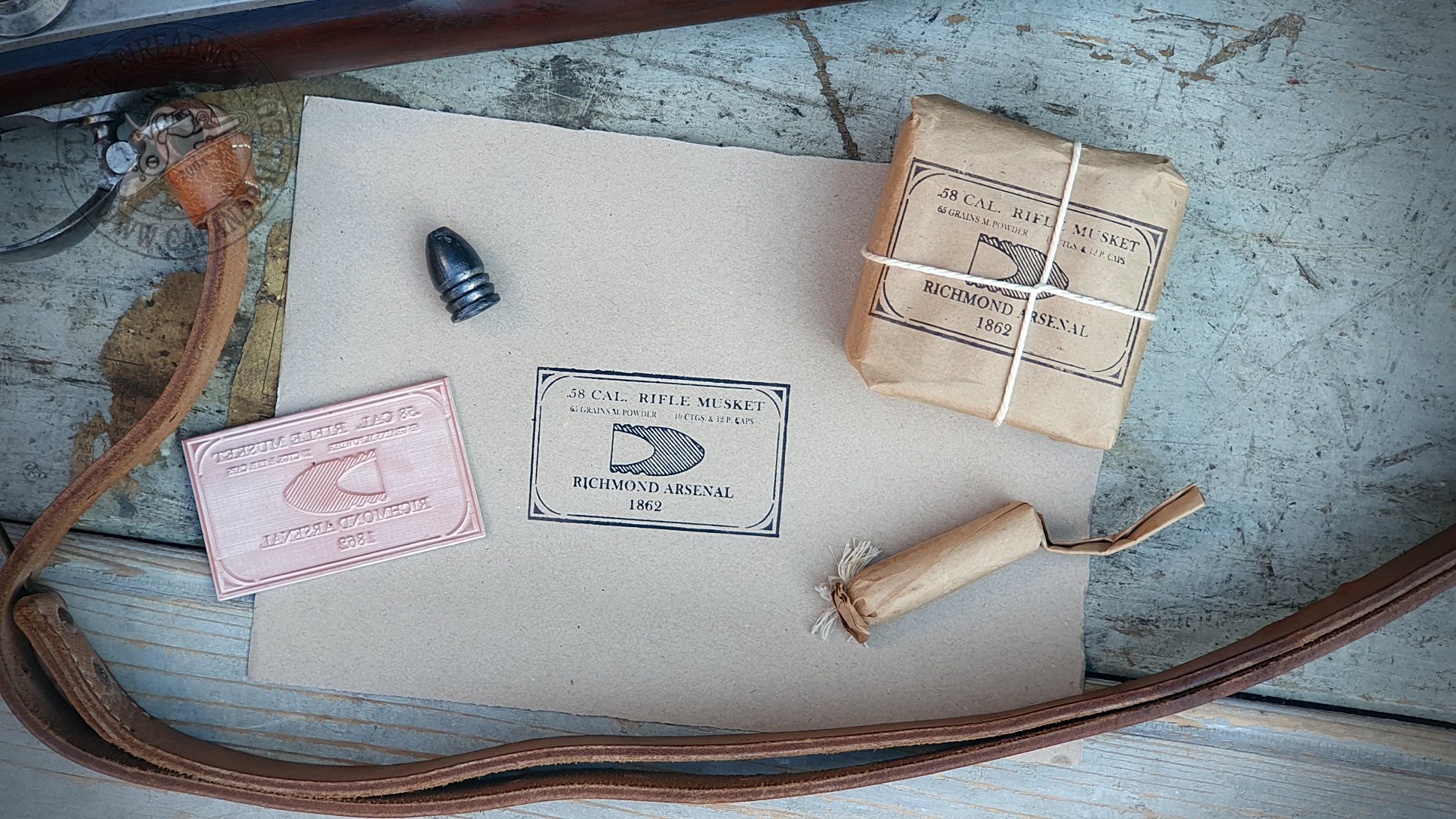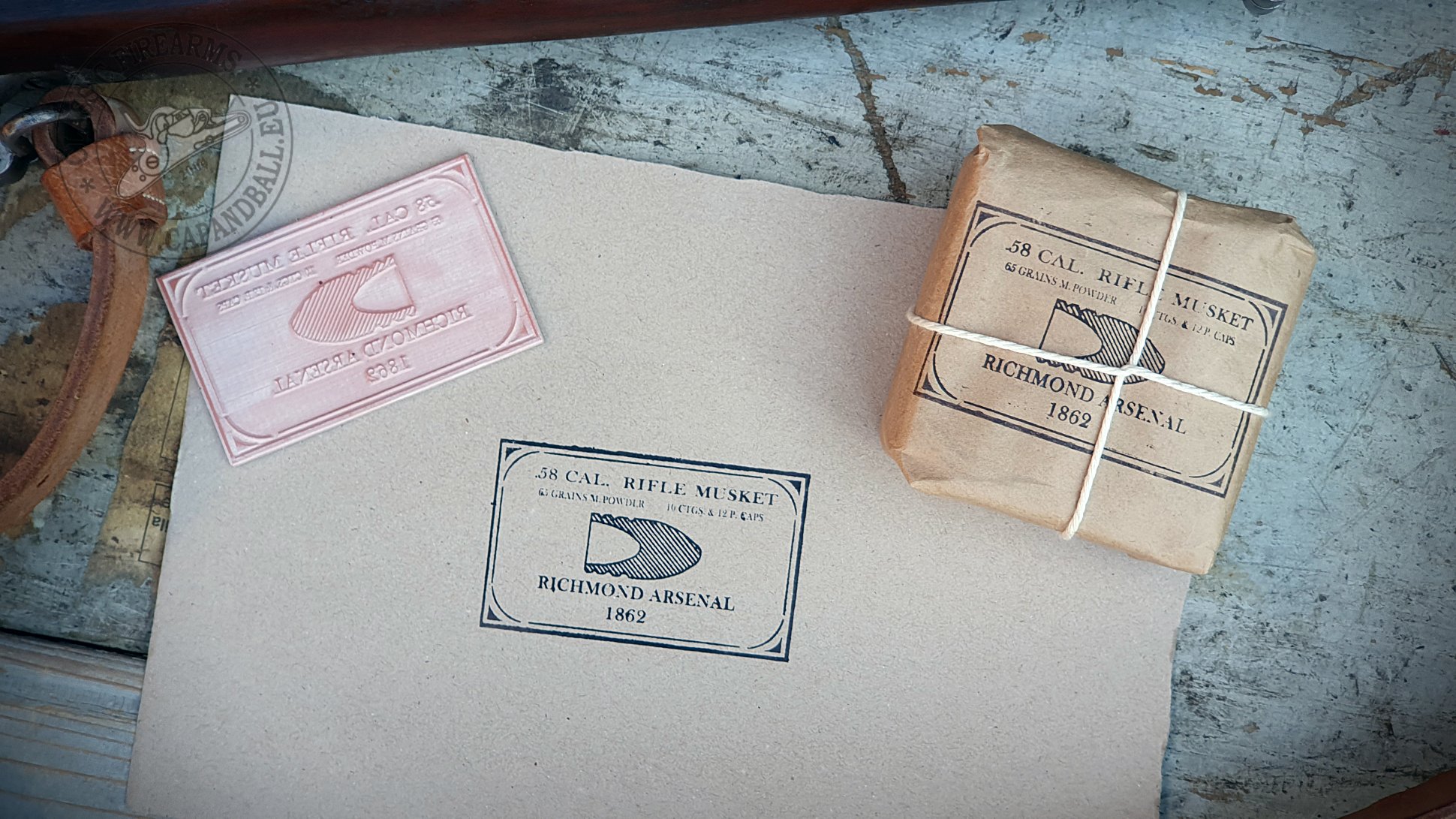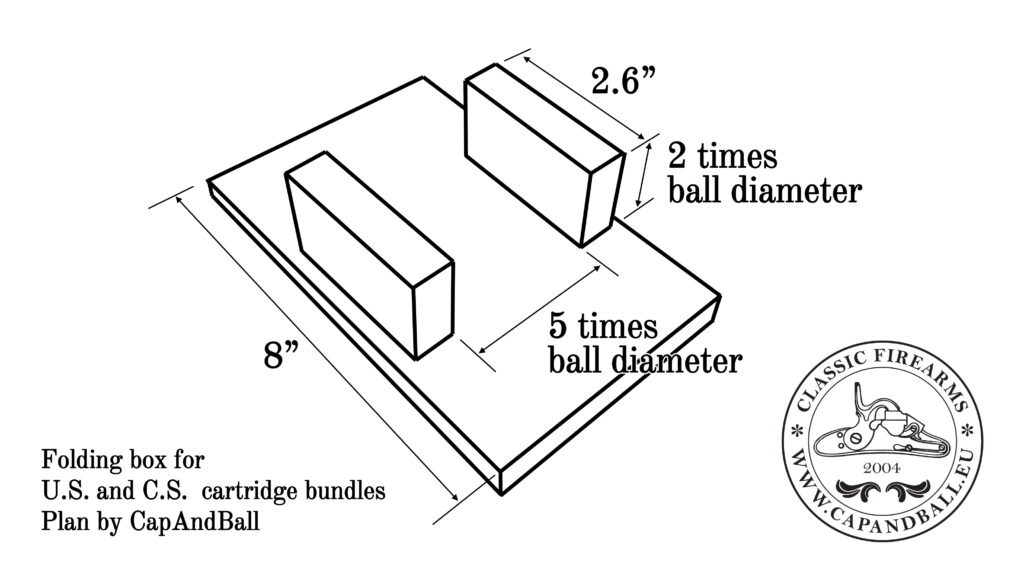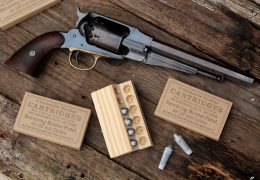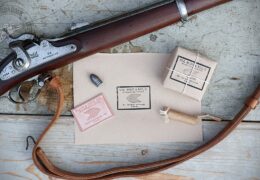The predecessor of the Richmond Armoury or Arsenal was the Virginia Manufactory of Arms established in 1798 to supply the militia of Virginia. The facility operated until 1821. At the break out of the Civil War, the Arsenal immediately started to serve the C.S. Army. The machinery from the Harper’s Ferry Arsenal was delivered to this location in 1861, and by October it was already making the southern variation of the Springfield rifle-musket, the Richmond rifle. The Arsenal was enlarged and modernized by Chief of Ordnance Josiah Gorgas, and kept serving the Confederacy until 1865. The Armoury manufactured both percussion caps and small arms ammunition. At it’s peak, 300-600 workers were involved in ammunition making. This label can be found on standard cartridge bundles made according to the Ordnance Manual of 1861 holding 10 American-style Minié-Burton ball cartridges with an approximate length of 2.3-2.5”. This label was printed on stickers attached to the front side of the bundle under or over the string.
Please note that you are solely purchasing the rubber plate, no other accessories are shipped in the package, except for this manual of instructions.
Instructions on making bundles
Tools you will need: scissors, white string, off-white craft paper, folding box, .54 cal wooden dowel for making cartridges, ink stamp pad, stamping ink
- Cut the paper sheets.
| Wrapper size | Bundle size | ||||
| Length (inch) | Width (inch) | Length (inch) | Width (inch) | Depth (inch) | |
| .69 Musket Minié | 10 | 8 | 2,5 | 3,4 | 1,45 |
| . 58 Musket and rifle Minié | 9 | 6,5 | 2,6 | 2,9 | 1,15 |
| .69 Round ball | 9 | 6,5 | 2,6 | 3,1 | 1,35 |
| .69 Buck n’ ball | 9 | 6,5 | 3,1 | 3,1 | 1,35 |
| .54 Sharps | 10 | 6,8 | 2,6 | 2,5 | 1,1 |
Theoretically the expanding ball .69 cal musket and .58 cal rifle and rifle musket cartridges had ordinary colour wrappers, the .58 cal cadet rifle shooting a lighter recoil cartridge with decreased powder charge and bullet wait had red colour wrapper, the .69 cal ball cartridges wrappers were supposed to be of green colour, while the buckshot cartridge wrappers were supposed to be red again. In practice these colour codes were seldom used during the conflict, therefore the labels and images of the wrappers were the key information source in differentiating the various cartridge bundles.
- Make the folding box by nailing two strips of wood to a 10×8” wooden plank. The length of the wooden strip is 2.6”, the distance between them is 5 times the diameter of the ball, their height is two times the diameter of the ball.
- Attach the rubber stamp to an appropriate size of wood with surface sanded smooth. Use double sided tape to attach the stamp.
- Apply ink to the stamp using the ink pad saturated with the desired colour (black or red) ink. Be sure that the complete surface is covered. Place the paper sheet on a semi hard surface (like 10 sheets of paper), and gently press the stamp on the paper. Experiment with different inks, pressure and paper quality to get the best result.
- Place the wrapper paper in the centre of the folding box, with the short sides towards the two sides of the box.
- Please 10 cartridges parallel with the sides of the box on the wrapper in two tiers with balls alternating.
- Roll a cartridge trapezoid on the .54 cal wooden former, choke and tie on one end, add 12 or 13 (late C.S.) percussion caps, and fold the tail. Insert the cap’s package in the opening of the cartridge bundle.
- Bring the two short sides of the paper together, and fold the sides like you were wrapping a gift box. Do not make perfect edges, but the bundle has to be stiff.
- Tie the bundle, first in the direction of the length, then its breadth, with the twine fastened in a single bow-knot.
- Enjoy your excellent cartridge bundle creating according to the original method using a Capandball Arsenal label stamp.

